In today’s complex work environments, preventing workplace violence requires more than just reactive measures—it demands a proactive, strategic approach guided by professional security consulting services. These specialized services help organizations identify vulnerabilities, implement de-escalation protocols, and foster a culture of safety that protects employees, customers, and company assets. In this guide, we’ll explore how security consulting services assess risks, develop tailored prevention plans, and train staff to recognize warning signs—enabling businesses to mitigate threats before they escalate and build a secure, productive workplace for everyone.
Security Consulting Services That Keep Your Workplace One Step Ahead
What Are the Key Types and Impacts of Workplace Violence?

Workplace violence describes acts or threats of physical violence, harassment, intimidation, or other threatening disruptive behavior that occur at work and directly affect employee safety and operations. Understanding types and impacts clarifies where prevention effort and resources should be focused, because different types arise from distinct causal chains and require tailored mitigation. Categorizing incidents helps organizations identify risk profiles, prioritize controls, and allocate training and security assets in a cost-effective manner. The next section lists the commonly recognized types and offers concise mitigation notes for each to guide initial strategy selection.
What Are the Four Main Types of Workplace Violence?
This subsection defines the four primary categories so organizations can map incidents to risk controls and prevention programs. Each type carries different prevalence patterns across sectors—retail, healthcare, corporate, and education—and requires specific behavioral and physical countermeasures. Below is a focused list with one-sentence examples and a mitigation note for each type to support rapid program design.
- Worker-on-worker: Internal disputes or harassment between employees that escalate to violence; mitigation includes clear reporting channels and behavioral threat management.
- Customer/client-on-worker: Aggression from customers or clients, common in retail and service settings; mitigation includes staff training and protective service layers.
- Domestic violence spillover: Personal relationships reflected at the workplace; mitigation includes safe-exit planning and confidentiality procedures.
- Criminal intent/external: Robbery or assault by outsiders targeting the facility; mitigation includes surveillance, access controls, and rapid response protocols.
These four types provide a practical taxonomy for prioritizing assessments, controls, and training before we examine the human and business impacts that make prevention essential.
How Does Workplace Violence Affect Employee Safety and Business Operations?
Workplace violence imposes immediate physical harm and long-term psychological injury that reduces morale and increases absenteeism, creating measurable operational disruptions. Financially, incidents drive direct costs (medical care, legal fees, settlements) and indirect costs (recruitment, overtime, lost productivity), making prevention a tangible ROI consideration. Reputational damage and regulatory exposure—especially when investigations reveal policy gaps—can compound losses and erode stakeholder trust. Recognizing these impacts motivates investment in prevention, which we explore next through threat assessment methodologies that translate risk into prioritized actions.
How Do Workplace Threat Assessments Help Prevent Violence?

Workplace threat assessments are a core part of modern security consulting services, helping organizations identify potential risks before they escalate into violent incidents. These assessments use structured analysis to evaluate behavioral, environmental, and operational factors that could create vulnerabilities within a workplace. Through interviews, site evaluations, and records review, security consultants translate scattered warning signs into a clear, actionable plan for prevention.
The process begins with identifying risk indicators such as concerning behaviors, access control weaknesses, or procedural gaps. A multidisciplinary team then evaluates these findings to determine intent, capability, and opportunity for harm. Finally, mitigation strategies are developed—ranging from employee intervention programs and training to physical security upgrades and policy updates. This systematic approach not only reduces the chance of violence but also helps leadership make informed investments in prevention rather than reactive spending after an incident.
What Are the Main Types of Threat Assessments Used in the Workplace?
Different organizations require different levels of assessment depending on their size, risk exposure, and internal culture. In security consulting services, three main categories are commonly used: behavioral, physical, and operational assessments.
A behavioral threat assessment focuses on individuals who may pose a risk, analyzing communication patterns, behavioral history, and contextual stressors to predict and prevent harmful actions. A physical security assessment examines access points, surveillance coverage, and environmental design to uncover vulnerabilities in buildings or campuses. An operational risk assessment looks at policies, training protocols, and response procedures to ensure the organization’s systems support a safe and compliant workplace.
Each type can be completed independently or combined into a comprehensive review. Together, they provide a clear picture of where risks exist and how to address them efficiently.
How Do Professional Security Consultants Strengthen Workplace Safety?
Professional consultants bring an outside perspective that combines investigative expertise with practical risk management. They use standardized tools and validated methods to assess threats objectively, reducing internal bias and ensuring findings can withstand external review or legal scrutiny if needed. Consultants often have backgrounds in law enforcement, intelligence, or corporate security, allowing them to interpret behavioral cues and environmental vulnerabilities accurately.
By working with experienced professionals, organizations gain access to court-ready documentation, prioritized mitigation plans, and confidential handling of sensitive information. These insights allow leaders to act quickly and with confidence, knowing their strategies are based on verifiable data rather than assumptions.
Why Is a Structured Threat Assessment Process So Important?
A structured process turns vague concerns into measurable, manageable actions. Without it, organizations rely on reactive measures that often come too late. Threat assessments conducted by qualified professionals within security consulting services ensure that risk identification, analysis, and mitigation happen in a logical, evidence-based sequence. By integrating behavioral analysis, physical security audits, and operational planning, companies create safer environments for employees, clients, and visitors alike. The outcome is not just a reduction in incidents but a culture of awareness, accountability, and preparedness that supports long-term organizational stability.
What Employee Training Programs Improve Workplace Safety?

Employee training programs play a crucial role in workplace safety by teaching staff how to recognize early warning signs, respond effectively during crises, and communicate clearly under pressure. Through consistent instruction and practice, these programs help employees develop the awareness and confidence needed to prevent incidents or minimize harm when emergencies occur. Professional security consulting services often design these programs to blend classroom instruction, practical drills, and policy reinforcement for a well-rounded approach.
The most effective programs focus on three key areas: active threat response, de-escalation, and coordinated emergency planning. Active threat response training helps employees identify danger cues, follow clear evacuation or sheltering procedures, and act without hesitation during high-stress moments. De-escalation training teaches communication and behavioral skills that prevent conflicts from turning violent, while emergency preparedness exercises align roles and response plans across teams. Together, these components form the foundation of a resilient safety culture.
How Does Active Shooter Response Training Prepare Employees?
Active shooter response training is one of the most recognized components of security consulting services, giving employees the tools to act decisively in the rare event of an active threat. The training emphasizes situational awareness, quick decision-making, and coordination with law enforcement. Through scenario-based simulations, participants practice escape routes, sheltering techniques, and communication procedures that reduce confusion and improve survival rates.
Unlike passive briefings, these sessions often involve hands-on drills where employees rehearse decision-making under stress. This approach helps build automatic responses so that, in real situations, actions are more instinctive and less panic-driven. By the end of training, participants should understand their roles, how to communicate effectively during a lockdown or evacuation, and how to maintain composure until help arrives.
What Are Effective De-Escalation and Conflict Resolution Techniques?
De-escalation training focuses on recognizing emotional triggers and using communication strategies to defuse tense situations before they escalate into violence. Participants learn to maintain calm body language, use measured speech, and apply empathy-based listening to establish control and reduce aggression. The training also covers boundary setting and identifying the moment when verbal resolution is no longer safe, ensuring employees know when to disengage and alert security or law enforcement.
These techniques are especially valuable for customer-facing roles, healthcare workers, and frontline supervisors who interact with the public daily. Consistent reinforcement of de-escalation skills not only improves safety but also enhances the overall work environment by promoting respectful, composed communication.
Why Are Tabletop and Emergency Preparedness Exercises Important?
Tabletop exercises simulate real-world incidents in a guided setting, helping teams test response plans, identify weaknesses, and clarify responsibilities before an actual emergency occurs. Participants walk through communication steps, coordination with external agencies, and decision-making under time pressure. This approach ensures that every department understands its role and that leadership can refine policies based on the lessons learned.
Integrating these exercises into regular training cycles strengthens organizational readiness and builds trust among employees. When combined with other security consulting services, tabletop drills provide a complete framework for prevention, preparedness, and response—ensuring that safety becomes a practiced habit rather than an afterthought.
How Can Security Consulting Services Enhance Physical and Operational Security?

Security consulting translates assessment findings into layered physical measures and operational reforms that reduce vulnerability and speed response. Consultants evaluate entry points, surveillance coverage, staffing patterns, and business processes to recommend prioritized interventions that balance cost, impact, and feasibility. The result is an operational plan that integrates guard deployment, surveillance upgrades, access control changes, and policy adjustments to make facilities harder targets and to clarify response responsibilities. Below is a checklist of best practices and a comparison table to guide decision-making on short- and long-term measures.
- Conduct a formal security audit using a documented scoring methodology to identify critical gaps.
- Apply layered controls: deterrence, detection, delay, and response to create redundancy and resilience.
- Prioritize low-cost, high-impact changes (lighting, signage, access control) before capital projects.
Intro to table: The following table maps common security measures to use cases and expected benefits to help organizations choose where to invest first.
| Security Measure | Use Case | Expected Benefit |
|---|---|---|
| Access Control Upgrades | Office entry points, visitor management | Reduced unauthorized entries and clearer accountability |
| Camera & Monitoring Enhancements | High-traffic and blind-spot areas | Improved detection and forensic capability |
| Security Guard Deployment | High-risk hours or events | Immediate deterrence and rapid response capability |
Summary: This tiered mapping enables organizations to sequence interventions—starting with cost-effective detection and deterrence—and scale to more resource-intensive options as risk and budget allow.
Serving those seeking investigations, security, training, and expert, confidential services. 4Horsemen Investigation & Security demonstrates how consulting recommendations translate into operational services such as executive protection, hostile termination support, and armed or unarmed security guard deployments, providing confidential, court-ready deliverables and rapid mobilization when requested.
What Are the Best Practices for Workplace Security Audits and Physical Security Enhancements?
A best-practice audit combines a site walkthrough, stakeholder interviews, incident history review, and a scored checklist to prioritize vulnerabilities by risk and cost. Recommendations follow a layered model—natural surveillance, target hardening, access controls, electronic detection, and response procedures—with cost tiers and implementation timelines. Audits produce a prioritized remediation plan with metrics for acceptance testing and scheduled reassessment. Organizations that adopt this method convert subjective concerns into measurable projects with tracking and accountability.
How Do Executive Protection and Hostile Termination Services Support Workplace Safety?
Executive protection and hostile termination services address high-risk personnel movements and contentious separations by providing planning, secure transport, and protective presence as needed. These services operate through careful coordination with HR and legal teams to preserve confidentiality and ensure lawful, safe execution of sensitive actions. Typical components include advance planning, site security during transitions, and contingency communications to mitigate escalation. When applied selectively, these services reduce risk to individuals and to the organization during high-exposure events.
What Are the Essential Elements of Workplace Violence Policy Development and Compliance?

Effective workplace violence policies define scope, reporting channels, investigation procedures, response actions, training requirements, and recordkeeping to create predictable, enforceable processes. The mechanism is formalization: written policies align behavior, clarify consequences, and create standards for investigation and documentation that support regulatory compliance and legal defensibility. Policies must reference OSHA workplace violence guidelines and be adaptable to state-level requirements, with a review cycle and KPI tracking to measure effectiveness. Below are essential elements that form the backbone of any robust prevention program.
- Policy scope and definitions that clarify prohibited conduct and covered personnel.
- Reporting procedures that protect confidentiality and encourage timely reporting.
- Investigation protocols that produce objective, documented findings suitable for internal action and, if needed, legal use.
- Response plans, training mandates, and recordkeeping requirements tied to review cycles.
The following table shows practical implementation steps and responsible roles to operationalize policy recommendations.
Intro: This table outlines a stepwise roadmap for policy development, from assessment to monitoring, with suggested responsible parties and timelines.
| Implementation Phase | Responsible Role | Expected Outcome / Timeline |
|---|---|---|
| Assessment & Scoping | Security/HR/Legal | Risk-informed policy draft (2–4 weeks) |
| Stakeholder Review | Leadership & HR | Revised policy and sign-off (1–2 weeks) |
| Training & Rollout | Security & Training Leads | Staff trained and procedures published (2–6 weeks) |
Summary: Following a phased roadmap aligns stakeholders, speeds adoption, and provides measurable checkpoints for continuous improvement and regulatory readiness.
How Do Workplace Violence Prevention Policies Align with OSHA and State Regulations?
Policies align with OSHA guidance by establishing hazard recognition, prevention planning, employee training, and timely reporting mechanisms; state laws may add reporting mandates or training requirements that must be incorporated. The practical step is to map policy elements to regulatory citations and to document how each requirement is satisfied through training, engineering controls, or administrative actions. This alignment reduces exposure during inspections and creates documentation that supports organizational decisions. Regular reviews ensure that policies remain current with evolving regulatory expectations and evidence-based best practices.
What Steps Are Involved in Developing and Implementing Effective Safety Policies?
Developing effective policies starts with a threat and vulnerability assessment, followed by drafting clear policy language, stakeholder review, and executive approval. Implementation requires prioritized training, communication plans, role assignments, and recordkeeping procedures with assigned owners and timelines for reassessment. Monitoring uses KPIs such as incident rates, training completion, and audit scores to measure effectiveness and guide updates. Organizations that follow this cyclical process maintain compliance, improve safety culture, and can demonstrate due diligence when incidents occur.
- Key metrics to track: incident frequency, response time, training completion, audit remediation rate.
- Review cadence: at minimum annual review or after significant incidents.
- Governance: cross-functional committee with security, HR, legal, and operations representation.
This structured approach ensures policies are actionable, compliant, and continuously improved based on measured outcomes and emerging threats.
Frequently Asked Questions

What role does leadership play in workplace violence prevention?
Leadership is crucial in workplace violence prevention as it sets the tone for safety culture and policy enforcement. Leaders must actively promote awareness, allocate resources for training, and ensure that employees feel supported in reporting concerns. By modeling appropriate behavior and prioritizing safety, leadership can foster an environment where employees are encouraged to engage in prevention efforts. Additionally, leaders should regularly review and update policies to align with best practices and regulatory requirements, demonstrating a commitment to employee well-being and organizational integrity.
How can organizations measure the effectiveness of their violence prevention programs?
Organizations can measure the effectiveness of their violence prevention programs through various metrics, including incident rates, employee feedback, and training completion rates. Regular audits and assessments can help identify areas for improvement and ensure compliance with established policies. Additionally, tracking the outcomes of training sessions, such as employee confidence in handling potential threats, can provide insights into program effectiveness. Establishing key performance indicators (KPIs) and conducting periodic reviews will help organizations adapt their strategies to evolving risks and enhance overall safety.
What are the legal implications of workplace violence incidents?
Workplace violence incidents can have significant legal implications, including liability for employers if they fail to provide a safe working environment. Organizations may face lawsuits from affected employees, regulatory fines, and reputational damage. Compliance with OSHA guidelines and state regulations is essential to mitigate legal risks. Employers must document their prevention efforts, including training and incident response protocols, to demonstrate due diligence. A robust workplace violence policy can also help protect organizations by outlining clear procedures for reporting and addressing incidents, thereby reducing potential legal exposure.
How can technology enhance workplace violence prevention efforts?
Technology can significantly enhance workplace violence prevention efforts through tools such as surveillance systems, access control mechanisms, and incident reporting applications. Surveillance cameras can deter potential threats and provide valuable evidence in case of incidents. Access control systems help restrict unauthorized entry, while reporting applications enable employees to quickly and confidentially report concerns. Additionally, data analytics can identify patterns and trends in workplace incidents, allowing organizations to proactively address vulnerabilities and improve their overall safety strategies.
What should organizations include in their emergency response plans for workplace violence?
Emergency response plans for workplace violence should include clear procedures for recognizing threats, reporting incidents, and activating emergency protocols. Key components should encompass evacuation routes, designated safe areas, and communication strategies for alerting employees and first responders. Training employees on their roles during an incident is essential, as is conducting regular drills to ensure preparedness. Additionally, the plan should outline post-incident support for affected employees, including counseling services and debriefing sessions, to help them recover and maintain workplace morale.
How can organizations foster a culture of safety among employees?
Organizations can foster a culture of safety by promoting open communication, encouraging employee involvement in safety initiatives, and providing regular training on violence prevention. Leadership should actively engage with employees, seeking their input on safety concerns and solutions. Recognizing and rewarding safe behaviors can also reinforce a commitment to safety. Additionally, creating a supportive environment where employees feel comfortable reporting issues without fear of retaliation is vital. Regularly reviewing and updating safety policies ensures that they remain relevant and effective, further enhancing the safety culture.
Conclusion
Whether addressing delicate personal matters like infidelity or implementing robust workplace safety protocols, proactive security measures are essential for protecting what matters most. At 4Horsemen Investigation & Security, we provide discreet, professional security solutions—from confidential investigations to comprehensive security consulting—designed to deliver clarity and safety. Take the first step toward peace of mind: Call 404-680-0860 or visit our website for a free consultation today. Let our experts help you build a safer, more secure future.





